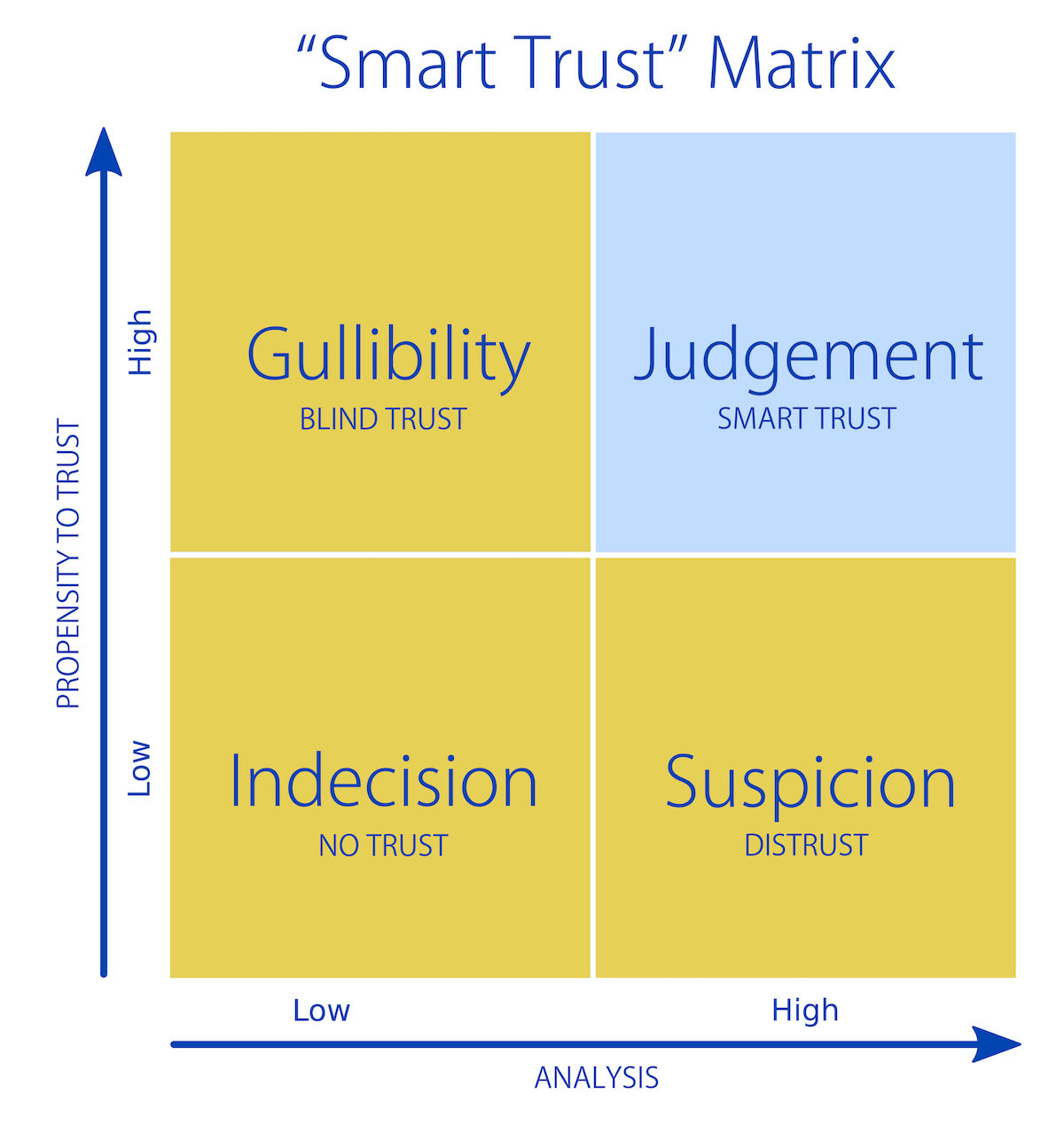74% less stress, 50% higher productivity, and 76% more engagement — the relationship between a happy team and workplace trust has never been clearer. But aside from benefits to employees, acclaimed leadership guru Stephen Covey, points out that when a manager leads with trust, speed goes up and costs come down, improving organizational success as well.
So how do leaders improve trust within the team to build business success? And how do they make sure no one trusts blindly, or overly scrutinizes situations and misses opportunities in the process? To tackle this, Stephen Covey offers the Smart Trust™Matrix.

The framework looks at two variables: the propensity to trust and analysis. The propensity to trust is a “matter of the heart” and is affected by one’s experiences. Analysis is more a “matter of the head” — it’s the ability to evaluate situations and consider solutions that improve the future.
The four quadrants carved out by these two variables define the way team members interact with each other and solve business problems. Let’s see how.
Zone of no trust
Consider Zoe, a coder working on a product update. Though her work is actually ‘good to go’, she frets about passing it to Lucia, the senior coder, for review. She does not possess the judgment to know that it is, in fact, good work and she does not trust Lucia to evaluate her work pragmatically and help her.
In the zone of no trust, people like Zoe feel paralyzed and unable to make a decision, stalling tasks and costing the team.
Zone of blind trust
When Matt needed a vendor for a marketing video, he engaged someone based on the opinions of his friends in the industry. However, the result was not what Matt had hoped for. He now wonders why he didn’t look at the vendor’s portfolio before hiring him.
In the zone of blind trust, people like Matt take costly decisions based only on their trust in people or processes. They do not evaluate matters pragmatically or plan ahead to counteract potential problems.
Zone of distrust
Marketing supervisor Sue is well known for her ability to meet goals. However, she does not trust her junior team members to do their jobs. She micromanages them and takes over their projects, delaying their deliverables in the process.
In the zone of distrust, micromanagers like Sue tend to become bottlenecks and foster poor team dynamics, causing delays and possibly leading to team attrition.
Zone of smart trust
When senior manager Pansy assigns projects to her team, she gives them the space to do their jobs as long as they understand what they are accountable for. She has checkpoint meetings with them to ensure they are on track and they reach out to her to discuss ideas as well.
In the zone of smart trust, managers like Pansy get the best out of their team through a balance of responsibility and accountability, and prudent risk management.
In which quadrants do your team members function? How do you generate high levels of trust and analysis among them? These are questions good leaders constantly think about and solve with the help of the Smart Trust™ matrix.









I loved the “Smart Trust” Matrix, since it’s very easy to comprehend for any one, even for those people who have no clue about business or marketing.